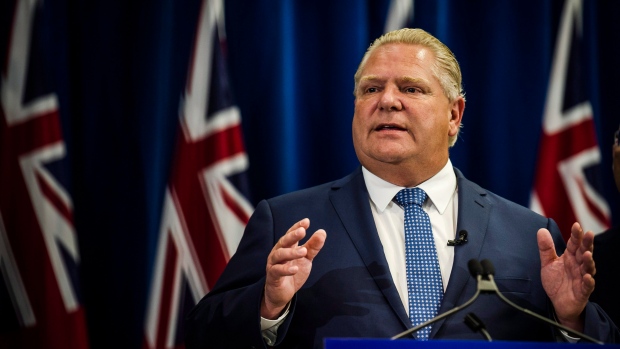Jul 30, 2018
‘Complete uncertainty’: Toronto braces for Doug Ford’s pot plan

If Ontario really does open its recreational cannabis market to private retail, Bruce Linton will be prepared.
“If the province wanted to roll out three to four hundred [cannabis retail stores] and they picked four or five parties to do it, I don’t think we would have any challenge maintaining our current market share which is about 30 to 40 per cent, and filling those up” the CEO of Canopy Growth, the country’s largest cannabis producer, told BNN Bloomberg in an interview.
That suggests Ontario could have as many as 10 times the total number of cannabis retail locations the previous government’s strategy would have created in the early days of legalization. Kathleen Wynne’s Liberals planned to have 40 Ontario Cannabis Store (OCS) locations stocked and staffed by Oct. 17, or roughly one storefront for every 338,000 Ontario residents.
While the expected pivot to privatization has been largely welcomed by the cannabis industry, not every industry insider would be pleased to see the Ontario market form along the lines Linton describes.
“It would be nice if as [cannabis retail] is opened up, that it opens up opportunity more broadly and opens up opportunity for more diverse players to be a part of the legal framework,” Rebecca Brown, CEO of cannabis-focused strategy and branding agency Crowns, told BNN Bloomberg via telephone.
“[But] Bruce Linton… has a very serious amount of capital at his disposal [and] people in the industry have been aware of this for some time. They have not been sitting idle; the companies that have the capital have been planning for this.”
- How is selling pot like making a jet engine?: Bruce Linton on Ontario's cannabis privatization
- Rushed retail rollout could blunt initial Canadian pot sales
- Cannabis giants eager to tap Ontario’s retail market amid looming privatization
RELATED
Those lacking deep pockets – even those who have in many cases already spent months operating grey-market dispensaries – could therefore be denied the opportunity to participate in the sort of private market Linton describes. That, as far as Rob Sysak is concerned, would not be ideal.
“For the brick-and-mortar [cannabis sales], it is really the mom-and-pop, the folks who have been here for a while who understand how to be a part of the neighbourhood,” Sysak, executive director of the West Queen West Business Improvement Area (BIA), told BNN Bloomberg via telephone, adding his neighbourhood just outside of downtown Toronto currently has two grey market dispensaries and at one point had as many as six.
“I think it is more important to have a more open market and to follow something like the Alberta model,” he said.
More than 530 individual applications have been submitted to the Alberta Gaming, Liquor and Cannabis Commission to open recreational cannabis retail stores so far. Provincial regulations there limit the total number of retail licenses any one entity is allowed to control at 15 per cent of the total, ensuring no single player can dominate the market.
The type of market Canopy’s Linton describes, by contrast, hews much more closely to the Manitoba model of cannabis retail. That province handed off its retail market in February to four private consortia – two of which include Canopy Growth.
And despite the speed with which Linton claims Canopy could get retail boots on the ground in Ontario, there is concern over the care required in selecting appropriate locations. Part of the reason the previous Ontario government opted for government-run cannabis stores was to exercise strict control over where to place them.
“If the [public option] really is water under the bridge at this point, then we need to know the strategies to ensure some level of dispersal and control and not getting these things into absolutely every neighbourhood and all the wrong places and not essentially carpet-bombing the city,” Ken Greenberg, former director of architecture and urban design for the City of Toronto and currently principal at Greenberg Consultants, told BNN Bloomberg via telephone.
“If this is not handled right there could be quite literally a saturation of these [cannabis] outlets appearing everywhere… they could outbid other uses quite significantly and it could upset the rent structure.”
“We are in a climate of complete uncertainty, hearing only that previous policies are being overturned,” Greenberg said. “The province needs to set the broad parameters.”


